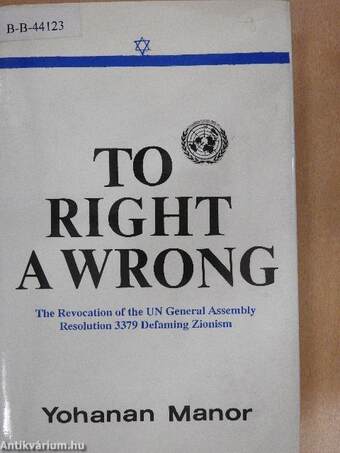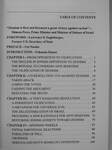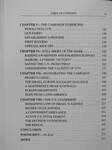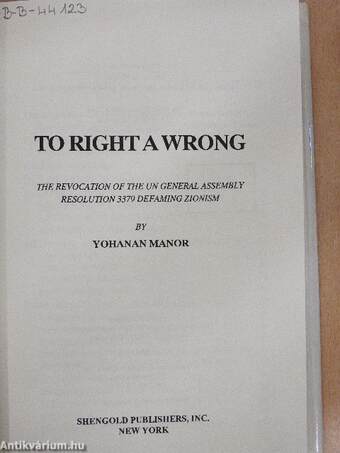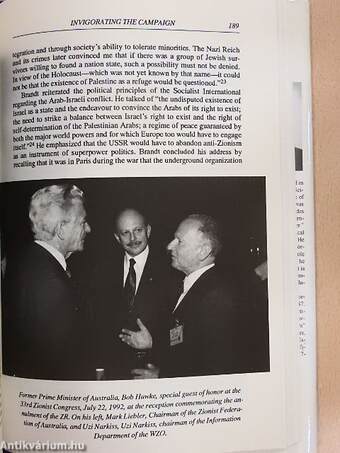1.067.017
kiadvánnyal nyújtjuk Magyarország legnagyobb antikvár könyv-kínálatát

VISSZA
A TETEJÉRE
JAVASLATOKÉszre-
vételek
To Right a Wrong
The revocation of the UN General Assembly resolution 3379 defaming zionism
| Kiadó: | Shengold Publishers, Inc. |
|---|---|
| Kiadás helye: | New York |
| Kiadás éve: | |
| Kötés típusa: | Fűzött keménykötés |
| Oldalszám: | 281 oldal |
| Sorozatcím: | |
| Kötetszám: | |
| Nyelv: | Angol |
| Méret: | 24 cm x 16 cm |
| ISBN: | 0-88411-189-X |
| Megjegyzés: | Fekete-fehér fotókkal. |
naponta értesítjük a beérkező friss
kiadványokról
naponta értesítjük a beérkező friss
kiadványokról
Fülszöveg
TO RIGHT A WRONG
by Yohanan Manor
To Right A Wrong is a dramatic and thoroughly documented monograph detailing the background, genesis, impact and abrogation of the United Nations General Assembly Resolution which, in November 1975, had equated Zionism with racism.
Although in its essence anti-Zionism is clearly different from anti-Semitism, anti-Zionism's most famous and biting e.xpres-sion can be clearly traced back to the United Nations refiisal to condemn anti-Semitism as a form of racism, in the middle of the 1960s.
In spite of several ominous signs, the adoption of the Z-R resolution took Israel and the Jewish people by complete surprise. The UNGA resolution 3379(XXX) was relegated to a kind of supernatural world, of demons and negative forces, which simply did not fit with the reality and perceptions in which we lived.
It took almost nine years to overcome the shock and the indignation over the passing of the Resolution and to find the will to embark on a coordinated... Tovább
Fülszöveg
TO RIGHT A WRONG
by Yohanan Manor
To Right A Wrong is a dramatic and thoroughly documented monograph detailing the background, genesis, impact and abrogation of the United Nations General Assembly Resolution which, in November 1975, had equated Zionism with racism.
Although in its essence anti-Zionism is clearly different from anti-Semitism, anti-Zionism's most famous and biting e.xpres-sion can be clearly traced back to the United Nations refiisal to condemn anti-Semitism as a form of racism, in the middle of the 1960s.
In spite of several ominous signs, the adoption of the Z-R resolution took Israel and the Jewish people by complete surprise. The UNGA resolution 3379(XXX) was relegated to a kind of supernatural world, of demons and negative forces, which simply did not fit with the reality and perceptions in which we lived.
It took almost nine years to overcome the shock and the indignation over the passing of the Resolution and to find the will to embark on a coordinated effort which addresses this issue in its entirety, weighing its destructive cumulative effects, and even dare to look at ways to overturn the resolution which seemed, at the time, to be a mission impossible both from a legal and political point of view.
The crucial involvement of the United States was achieved by the unrelenting efforts and pressures exerted by several Jewish and non-Jewish groups and personalities in the United States. A most indispensable contribution was the remarkable resolution adopted by the Australian parliament, on the initiative of the Australian government.
The overturn of the Z-R resolution in December 1991 not only contributed to putting an end to Israel's pariah status in the United Nations and other international institutions, but it also paved the way for a UN involvement in fighting anti-Semitism, hence closing the circle of the 60s, with its reluctance to condemn anti-Semitism. For the United States also, it was a way of correcting its earlier mistake of pulling back and not standing firm in its demand to have anti-Semitism condemned as a form of racism in the 60s. Vissza
Témakörök
- Szociológia > Társadalmi csoportok > Kisebbségek > Zsidóság > Cionizmus
- Idegennyelv > Idegennyelvű könyvek > Angol > Szociológia > Társadalmi csoportok > Kisebbségek > Zsidóság > Cionizmus
- Idegennyelv > Idegennyelvű könyvek > Angol > Történelem > Egyéb
- Jogtudomány > Jogi ismeretek > Nemzetközi jog
- Történelem > Idegennyelvű > Angol
- Történelem > Politika > Külpolitika > Diplomácia
- Idegennyelv > Idegennyelvű könyvek > Angol > Jogtudomány > Egyéb
- Történelem > Kontinensek szerint > Ázsia, ázsiai országok története > Közel-Kelet
- Történelem > Legújabb kor > A hidegháború kora (1946-1991)
- Történelem > Monográfiák > Világtörténelem
- Történelem > Politika > Ideológiák > Egyéb



